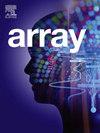Improving test suite generation quality through machine learning-driven boundary value analysis
IF 4.5
Q2 COMPUTER SCIENCE, THEORY & METHODS
引用次数: 0
Abstract
Boundary value analysis (BVA) is a widely used method in software testing to identify errors at the boundaries of input domains. However, traditional BVA is resource intensive and often impractical for complex systems with expansive input spaces. Recent advances in machine learning offer potential for automating BVA, improving efficiency and fault detection capabilities. This paper introduces a machine learning based approach for the automatic generation of boundary test inputs. The research focuses on addressing the automation of BVA processes, with a particular emphasis on white-box testing scenarios. The proposed methodology consists of two main steps. First, a ML-based discriminator is trained to identify the existence of a boundary between two test inputs. Based on the discriminator’s output, we calculate the boundary density using two proposed methods: “pointDensity” and “pairDensity.” In the second step, Markov Chain Monte Carlo (MCMC) techniques are applied to generate test inputs guided by the calculated boundary densities. Experiments were conducted to evaluate the fault detection capabilities of the ML-based approach compared to concolic testing and manual boundary analysis. The results show that our proposed method surpasses manual boundary analysis in five of the eight programs and outperforms concolic testing in four out of eight programs.
通过机器学习驱动的边界值分析提高测试套件生成质量
边界值分析(BVA)是软件测试中广泛使用的一种识别输入域边界处错误的方法。然而,传统的BVA是资源密集型的,对于具有广阔输入空间的复杂系统往往不切实际。机器学习的最新进展为自动化BVA、提高效率和故障检测能力提供了潜力。本文介绍了一种基于机器学习的边界测试输入自动生成方法。研究的重点是解决BVA过程的自动化,特别强调白盒测试场景。拟议的方法包括两个主要步骤。首先,训练一个基于机器学习的鉴别器来识别两个测试输入之间是否存在边界。基于鉴别器的输出,我们使用两种方法计算边界密度:“pointDensity”和“pairDensity”。第二步,应用马尔可夫链蒙特卡罗(MCMC)技术在计算的边界密度指导下生成测试输入。通过实验来评估基于ml方法的故障检测能力,并将其与闭合测试和人工边界分析进行比较。结果表明,我们提出的方法在8个程序中的5个程序中优于人工边界分析,在8个程序中的4个程序中优于结肠测试。
本文章由计算机程序翻译,如有差异,请以英文原文为准。
求助全文
约1分钟内获得全文
求助全文

 求助内容:
求助内容: 应助结果提醒方式:
应助结果提醒方式:


